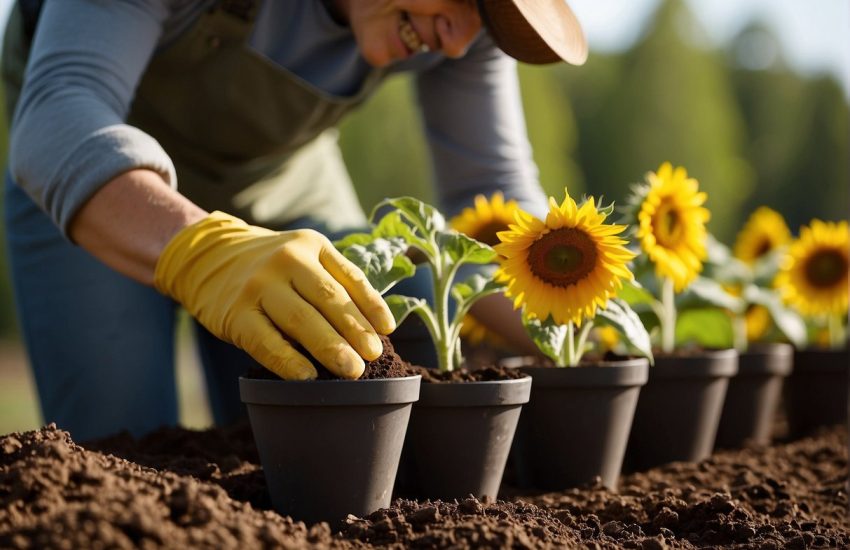Shrimp Plant: How to Grow and Care
Hi everyone. If you like to take care of your garden or bring your garden inside with flower pots and show special care to them, this article is for you. As you care about your flowers, I care about how you should take care of them. In this article, I will suggest an excellent, carefree flower you want to add to your garden.
Are you bored with ordinary garden flowers and looking for a flower that blooms in different colors? Do you care about your beautiful garden and want to add some new carefree plants? Here is that wonderful flower, “Shrimp Plant” with various colors. If you google it, it shouldn’t be hard to understand why it’s called Shrimp. This blog is for you if you want to pick this flower, which resembles a shrimp at first sight, next to other flowers in your garden.
In a moment, I will tell you in detail everything you need to know about the varieties of Shrimp Plant, where Shrimp grows naturally, how to care for shrimp, and the soil characteristics. So let’s start with what this flower is.
Origin of the Shrimp Plant
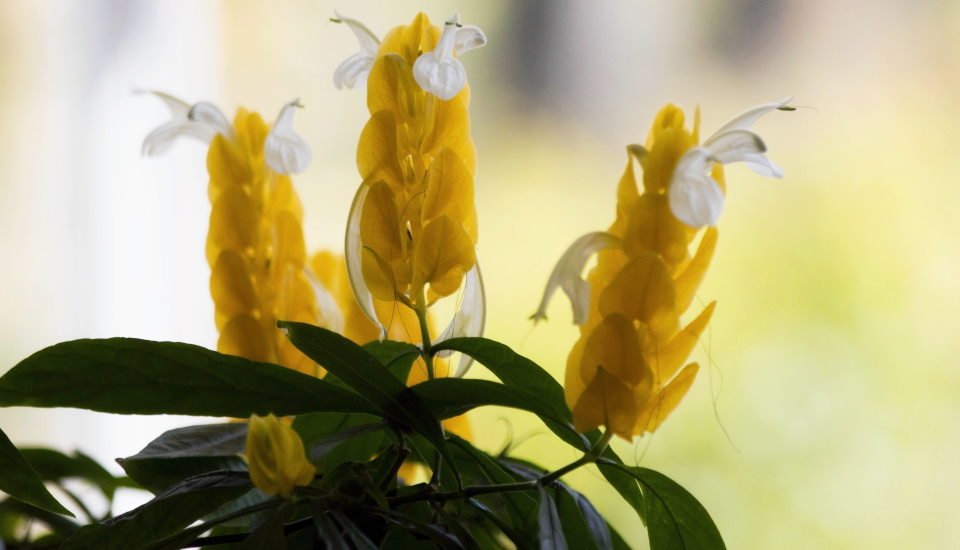
Shrimp plants have a long growing season and make good house flowers. They are evergreen shrub flowers with soft stems that grow to a height of 3-7 feet and are members of the Acanthaceae family. Shrimp plants come in rusty red, pink, and lime green bracts with white flowers.
The flowers are tiny and tongue-shaped, with little scent. Each spreading stem of the shrimp plant is finished with bracts that resemble shrimp. These vibrantly colored bracts are spikes of 4 to 6-inch overlapping curving flower heads with delicate apple-green foliage. Justicia brandegeeana is the botanical name for the shrimp plant shown with curving reddish-pink bracts.
Because they are native to Mexico, they are usually referred to as Mexican shrimp plants. Worts with lime green bracts, often known as yellow bracts, have the botanical name Pachystachys lutea. They are also known as golden shrimp plants. This wort is only found in Central and South America. Shrimp plants are both outdoor and interior plants in tropical and subtropical climates. Birds, bees, and butterflies are drawn to the flowers. The shrimp blooms all year, although the greatest times are in the summer and fall.
Types of Shrimp Plant
1-Golden Shrimp Plant
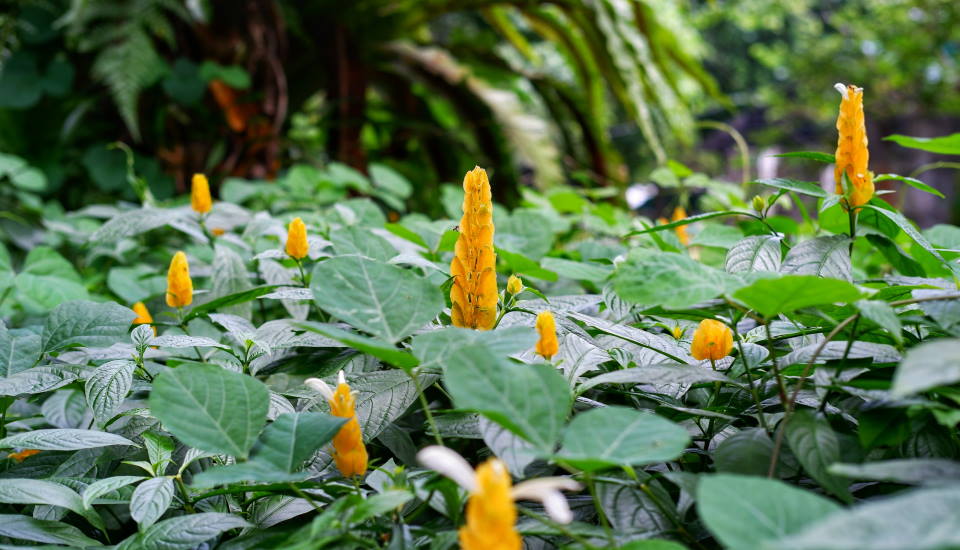
The golden shrimp plant is a popular landscape wort in tropical and subtropical areas. During the summer months in the Midwest, Shrimp is easily grown as a colorful growing housewort or as a seasonal annual. Pachystachys lutea is a soft-stemmed, broad-leaved wort in the acanthus family that is also known as a golden candle or lollypop flower (Acanthaceae). From El Salvador to Peru, Shrimp is native to the lowlands of Central and South America.
Golden shrimp plants can grow 3-6 feet tall in warm climates, but they can be kept much shorter in container culture. They need more care because they are more fragile than other species. The opposite, lance-shaped leaves, which grow 2-6 inches long, are heavily veined and appear corrugated. Simple, dark green leaves cover the branching, woody stems, contrasting with the bright flower spikes.
The overlapping, vibrant yellow bracts of the four-sided, 3-5 inches tall conical inflorescences, which resemble the edible crab, give this flower Shrimp’s common name. Above the dark foliage, the flower spikes rise tall. Individual flowers are little white tubes with two lips that emerge partly from magnificent bracts. Each raceme has many blooms that open in a certain order as they go up the spike.
This wort blooms all year in the tropics; in temperate locations, it is more seasonal, growing larger in the summer unless kept in very bright light. Small capsules holding countless seeds follow the blooms in the tropics.
The golden shrimp plant is a unique addition to any garden in the Midwest. Shrimp may be used as an accent wort in a mixed container on the patio or as a single potted wort paired with other containers.
2-Red Shrimp Plant
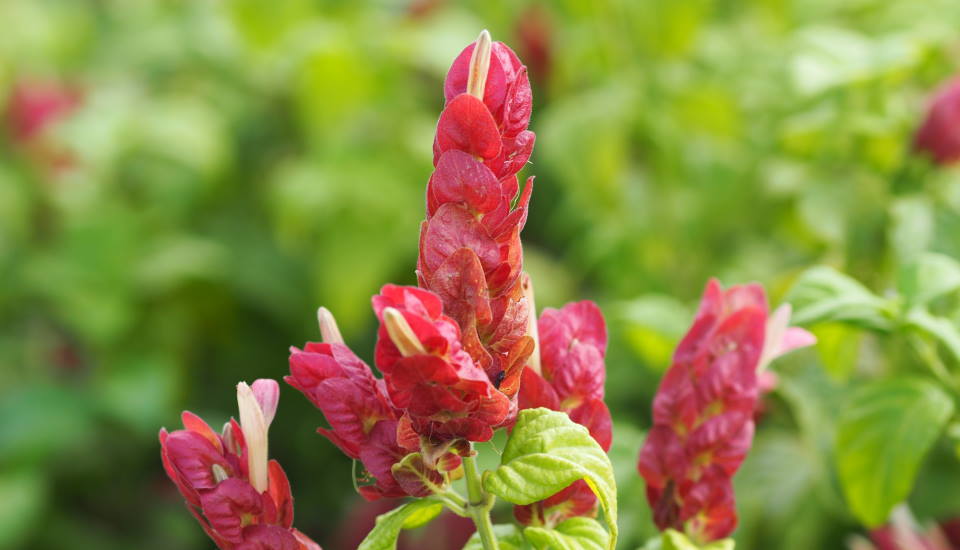
The Mexican perennial red shrimp plant is loved by novice and experienced gardeners. The red shrimp plant (Justicia brandegeana) is a billowing, evergreen species with curled, scarlet bracts and little white flowers that grow 2 to 4 feet tall in daylight or mild shade. Shrimp has attractive nodding blooms that attract butterflies and hummingbirds all year. This easy-to-grow perennial, like other perennials, prefers mulched, organically enriched settings that are watered during dry periods.
Because the red shrimp plant’s wiry, jointed stems tend to root anywhere a node contacts the soil, trimming may be necessary to keep the plants in check. The shrimp plant’s flexibility and absence of pest and disease concerns make the shrimp a garden standard. Shrimp is suitable for butterfly gardens, mixed shrubbery borders, foundation plantings, and tub culture.
3-Purple Shrimp Plant
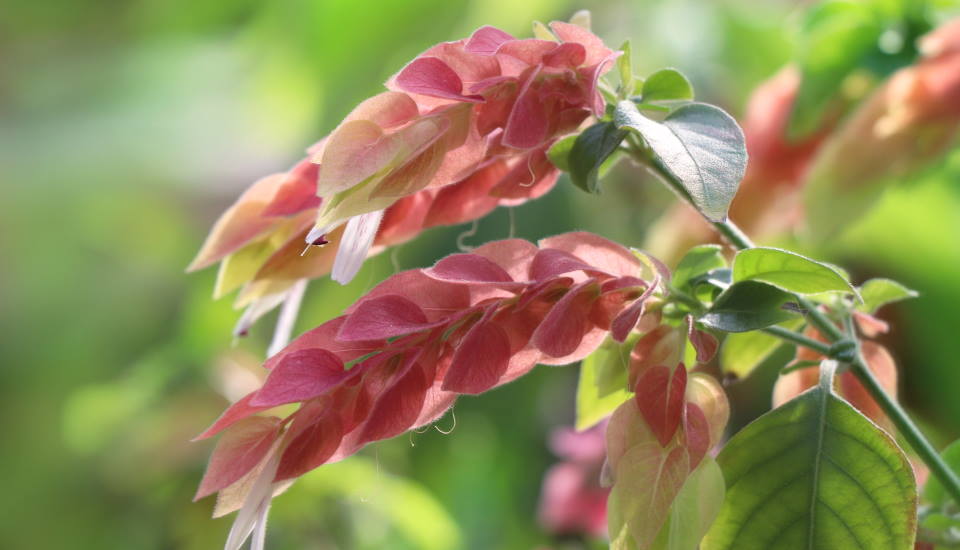
Purple Shrimp Plant (Justicia scheidweileri) is a low-maintenance, low-growing tropical, evergreen perennial that adds color to shaded environments. Long, pointed, velvety green leaves with wide, silvery veins appeal in and of themselves. The major reason to plant them is for the beautiful burgundy-colored bracts from which open-throated, mauve blooms appear all year in the tropics but only from spring through October in more temperate climates. The flowers grow on tall spikes, and this plant thrives in bigger tubs and containers.
How to Plant a Shrimp Plant?
There are many important elements that you should care about when planting the Shrimp plant. At the beginning of these is the environment where the plant will grow and be cared for well. Will you grow the wort at home or in your garden? Once you’ve decided on that, listen to what I’m going to say and take care of your plant carefully.
To escape the arduous and fragile process of growing seeds, I recommend buying a plant that is 1 to 2 feet tall, with a healthily plant about 1 foot long, which was previously grown. You can easily find the grown ones in gardening care centers or on the internet.
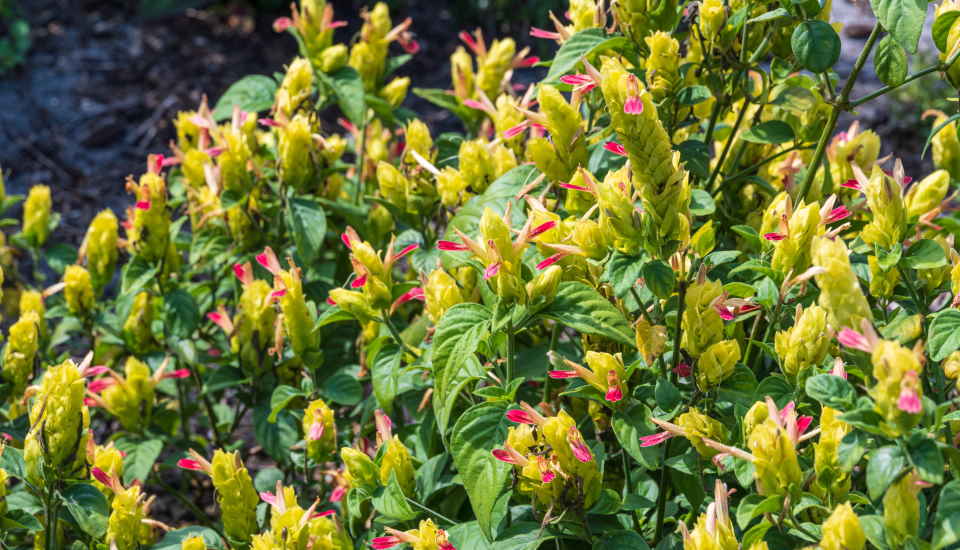
To begin planting, first, carefully make a hole in the ground or a pot with your garden tools. Be sure to make sure that you make a hole wide enough to fit the pot off the Shrimp Plant you purchased so that your plant is not damaged by not being fed enough.
When removing the flower from the shrimp pot, you should act carefully to ensure the roots are not damaged. If there are intertwined roots, you can use garden shears to separate them, but in doing so, ensure you do not damage the main root.
Check carefully one last time to ensure the roots are intact before planting in the hole you have opened. Then gently place the Shrimp Plant in the hole you have opened. Then close the hole using the soil from the area you are digging. Do not add any fertilizer or any substance that will enrich the soil.
After planting, water your flower carefully to take root. Check the bark to ensure your Shrimp Plant takes root 1 or 2 weeks after taking all the action. If the trunk is green, your Shrimp Plant is rooted, but if the trunk is starting to turn yellow, I’m afraid you need to buy a new Shrimp Plant and do all the work carefully again.
How to Care for a Shrimp Plant?
I think the care of this species is not very difficult because it is a species that does not require any special care. Although the care requirements are often the same as those of other species, there may be some special care situations. In general, if we need to talk about the care needs of this species, I can list them as follows.
Climate
The shrimp plant generally prefers temperate climates. For garden-grown Shrimp Plant, temperatures that meet this condition are an average of 55 degrees Fahrenheit at night and 70 degrees Fahrenheit during the day. For those grown inside the house, preference should be given to areas where the temperature change is less.
Watering
Water is the most important resource in the life cycle of every living thing. Just like in humans, the most important source of plants is water. Thanks to water, plants that can continue their life cycles with photosynthesis produce oxygen and benefit us at the same time.
Yes, without further ado, let me talk a little about the water requirements of the Shrimp Plant. The shrimp plant is a type that loves water and cannot stand being dehydrated for a long time. Therefore, watering Shrimp Plant regularly twice a day, in the morning sun and at sunset, will be enough for your plant to continue shrimp life healthily.

One of the biggest mistakes in watering flowers is the amount of irrigation. Plants should be watered neither in small quantities nor in large quantities. Irrigation with an average glass will easily provide the daily amount necessary for the plant to continue shrimp life.
Most people may be giving the plant plenty of water the day before, perhaps because they won’t be home the next day. But excessive watering stresses your wort. This is a very wrong move because the stressed worts begin to shed shrimp leaves.
This leads to the plant’s inability to photosynthesize, that is, indirectly to the death of the plant. If you can’t be home for a long time, I can suggest a few things to deal with. The most important of these may be to find someone who can take care of your plants. Suppose you want to care about water problems. In that case, you can buy an automatic plant irrigation system or make an amateur drip system at home.
Lighting
Let’s consider the second most important factor for the most important plants. Light. Light plays an important role in photosynthesis. Without light, there would be no photosynthesis. A wort that cannot make photosynthesis cannot continue a shrimp’s life.
So you should make sure that your plants get enough light. You might think, “I should grow this plant by the window,” but that might be the wrong move. Not every plant wants direct exposure to sunlight, just like some people do. Although the sun is essential for photosynthesis, direct exposure to light from the sun can harm some plants.
These plants usually prefer filtered sunlight. You can say what filtered sunlight means, which is quite natural. Filtered sunlight can be anywhere in your home that doesn’t get direct sunlight. Our flower, Shrimp Plant, is also among this wort. To summarize, keep your flower in an area that does not receive direct light but is bright during the day.
Fertilizer
The use of fertilizers occupies an important place in growing worts. Fertilizer is an important supplement that replenishes the decreasing nitrogen, carbon, micro and macro minerals, and other resources necessary to grow worts over time. The types of fertilizers recommended to be used for Shrimp Plant are; slow-release fertilizer and liquid fertilizer. If you haven’t dealt with these things much before, you can now ask me what these two are and the differences between them, which I think is a very natural question. Now I’m going to tell you about these two fertilizers.

For the best care, slow-release fertilizers give a consistent supply of nutrients for a long time. They contain nutrients (mainly nitrogen) in a form that makes them unavailable right away. Because of this, slow-release fertilizers may provide a reliable and consistent supply of nitrogen for up to four months, even in inclement weather. Thanks to these, you do not care about fertilizing constantly. To mention a few benefits of using slow-release fertilizer:
- Nutrient release is temperature/humidity dependent.
- Up to 4 months of continuous N supply
- No growth peaks imply steady growth
- Carefree fertilizing process
- Burning risk reduction
- Less leaching encourages a healthy root system.
Liquid fertilizers are administered as foliar feeding by dusting the nutrients over the flower with a water container or spraying the entire wort with a sprayer. Flowers absorb nutrients via their leaves rather than their roots.
Use liquid fertilizer as a foliar spray during the cooler hours of the day to avoid sunscald on the leaves. Early mornings, late afternoons, and even rainy days are all options. Spraying may be done anywhere from once a day to once a week for the best results.
Pruning
The shrimp plant does not need pruning much. You can usually tear off flower heads towards the end of the growing season. Hence, your plant will be healthier in the next blooming season. If you are growing Shrimp in a pot at home, you will prevent your flower from weakening and wilting by pruning more than once a year. The important element you should pay attention to when pruning is doing it without damaging your flower. Otherwise, it can lead to the death of the wort.
Diseases
In general, shrimp plants are disease and insect-resistant. Red spider mites can turn the leaves yellow, and webs can be seen beneath the leaves. Greenflies are little green insects that adhere to the leaves. A general-purpose pesticide can be used to treat both pests. Although shrimp plants thrive in high humidity, too much can promote fungal diseases like leaf spots. Keep the space under the leaves clean of dead leaves and other debris by not overwatering Shrimp. Wait until the fungal growth has subsided before fertilizing.
Conclusion
To summarize what I have mentioned so far, Shrimp is a species whose homeland is Mexico. There are 3 common species. These are the red, golden yellow and purple ones. The most common species is the red one. The elements to be considered in irrigation are not to water the wort in hot weather – it can cause burns on the leaves – and the amount of water used during irrigation.
The ideal watering times are early morning and sunset. The ideal amount of water is an average of one liter per day. If we talk about lighting, Shrimp does not like to be exposed to this type of direct sunlight. Therefore, shrimp should be kept in areas without direct sunlight. For those grown in the garden, this is not very important.
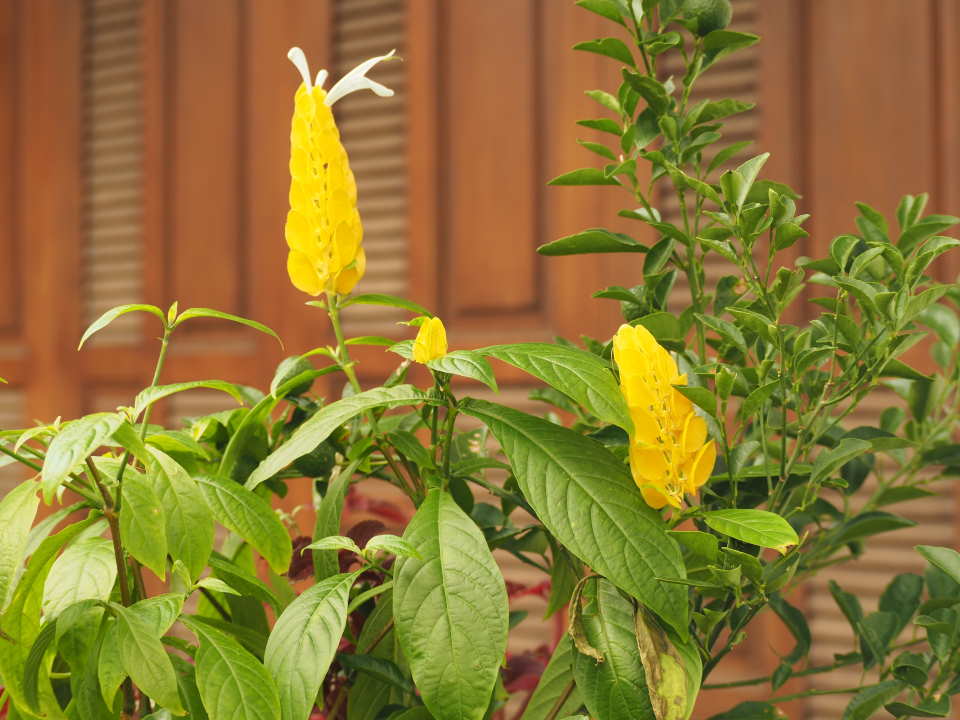
When it comes to fertilizer, I usually recommend using nitrogen-containing fertilizers. In general, it will be beneficial for you to use a slow-release fertilizer. However, liquid fertilizer offers more advantages when the summer months are passed. The only thing to pay attention to when pruning is not to harm. Apart from this, it will be enough to prune once a year for shrimp.
The amount of pruning should be increased for those grown at home, and the weakening of the trunk should be prevented. A few things can lead to this type of disease that is generally resistant to disease. One of them is red spiders. They lead to the leaves turning from green to yellow, which affects photosynthesis. Shrimp do not need a special kind of spraying. Ordinary spraying carried out regularly will suffice.
If you value my article and have read it so far, thank you all very much. I hope that in my article I have given you accurate and useful information about how to take care of your flower.
You may also be interested in:

